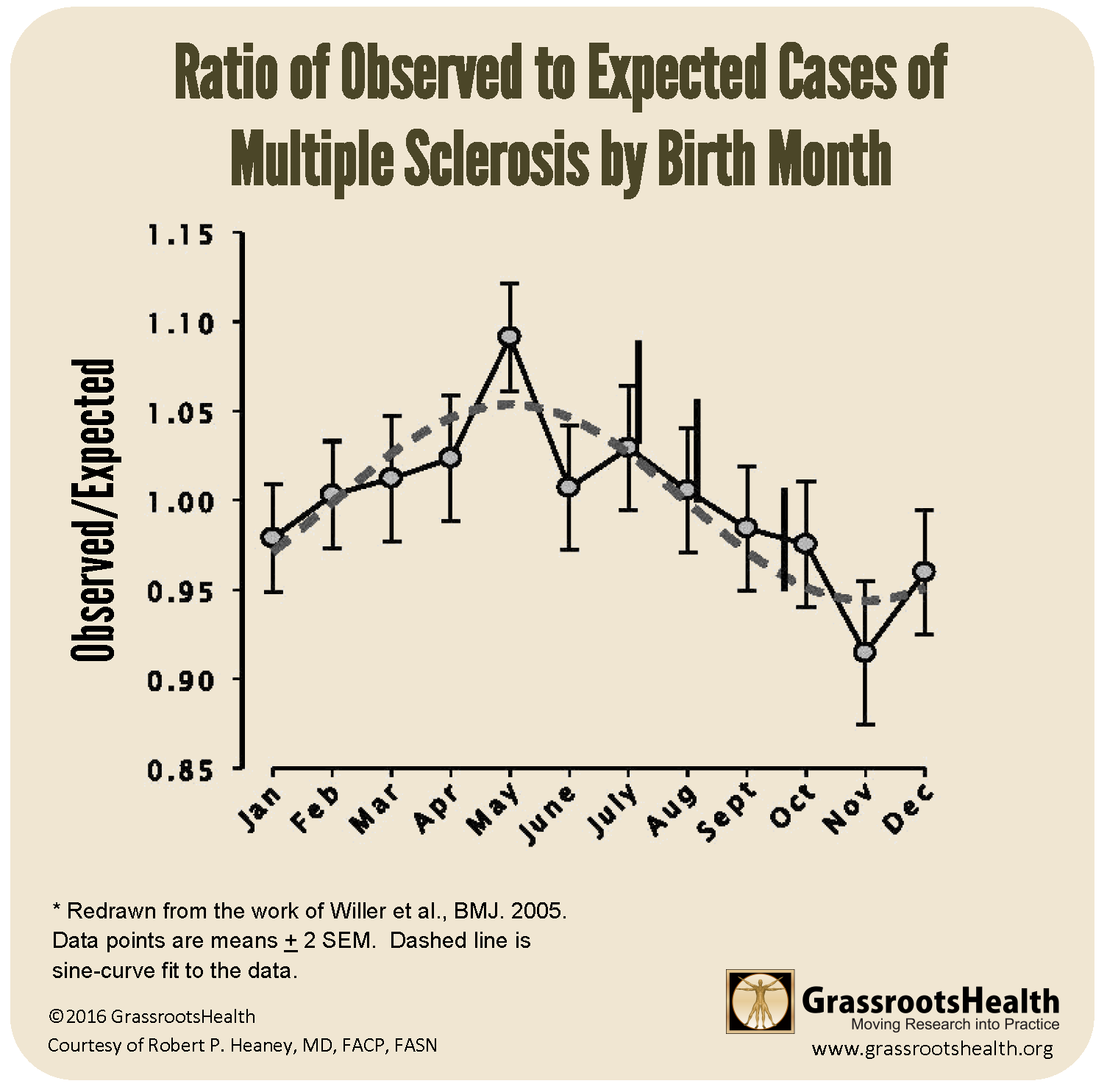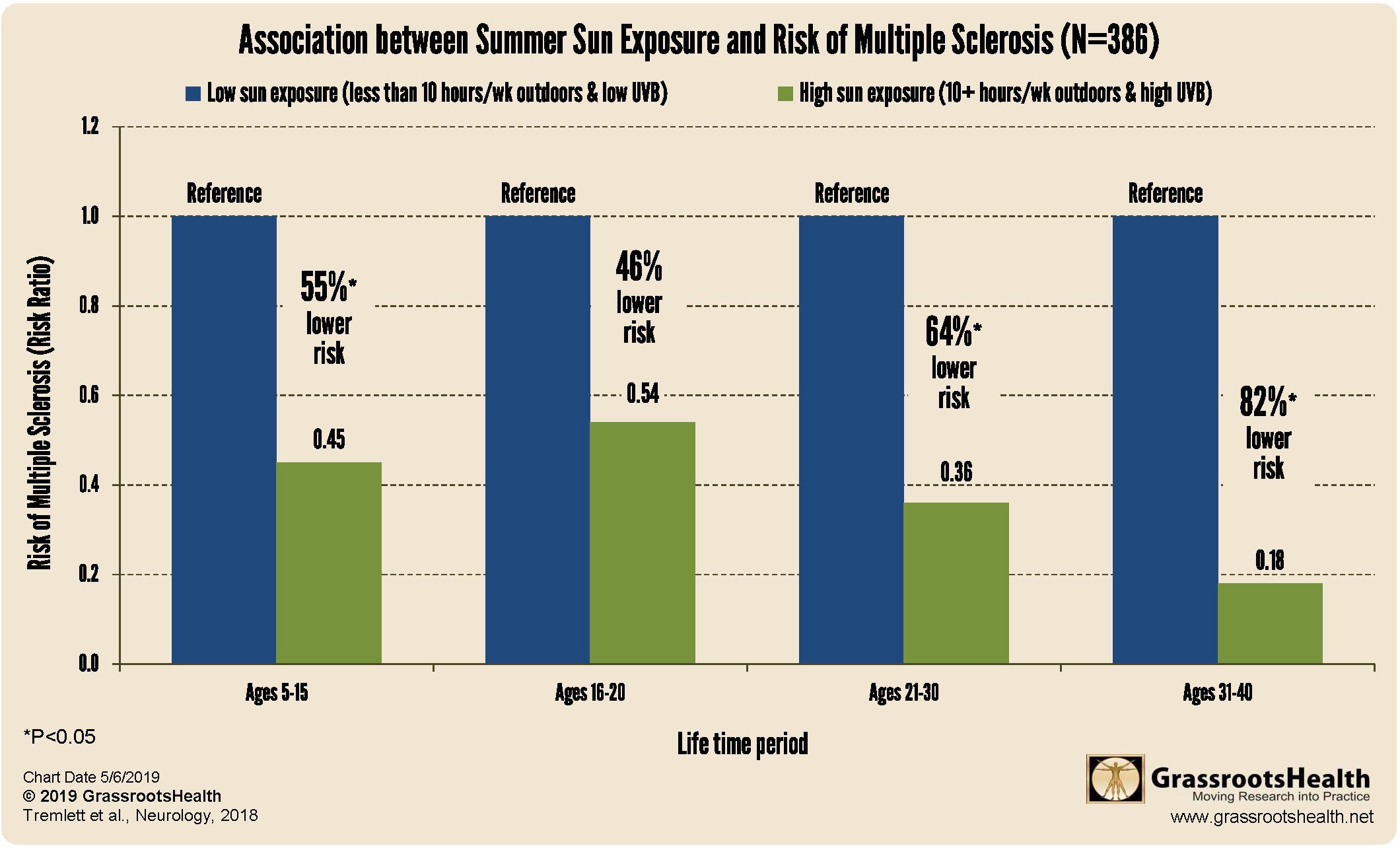Published on May 26, 2020
 Multiple sclerosis (MS) is a chronic, auto-immune disease that affects more than two million people worldwide. The disease is characterized by antibodies that attack the nervous system leaving the brain unable to communicate with the rest of the body. Typical symptoms include fatigue, numbness and tingling, vision problems, and problems with coordination, memory, and concentration. Studies have linked both low vitamin D status and low sun exposure with an increased risk for MS.
Multiple sclerosis (MS) is a chronic, auto-immune disease that affects more than two million people worldwide. The disease is characterized by antibodies that attack the nervous system leaving the brain unable to communicate with the rest of the body. Typical symptoms include fatigue, numbness and tingling, vision problems, and problems with coordination, memory, and concentration. Studies have linked both low vitamin D status and low sun exposure with an increased risk for MS.
The role of vitamin D in MS
There is a lack of randomized controlled trials (RCT) on vitamin D and MS, but there is promising observational evidence that suggests vitamin D is beneficial for improving the symptoms of MS.
The “Barker Hypothesis” theorizes that certain adult-onset diseases originate from nutrient deficiencies in the womb or in early infancy. Nutrient deficiencies during critical periods of development are thought to cause irreversible damage, even following nutrient repletion.
Dr. Robert Heaney commented on the findings of a study that exhibited the “Barker Hypothesis” in full swing. The study found a correlation between the incidence of MS and the time period in which individuals were born. Those born in May (following a winter pregnancy) had a higher risk of MS compared to individuals born in November (following a summer pregnancy). Dr. Heaney attributed this to low vitamin D levels during pregnancy and early infancy and emphasized that vitamin D levels should be between 40-60 ng/ml in the pregnant mother and infant to protect against MS later down the road.
UV exposure, vitamin D status, and MS
In an editorial, Dr. Cedric Garland shares that for about 20 years we have known that sunlight deficiency is the main cause of MS. People who grow up in Seattle have 10 times the incidence of MS as people who grow up in San Diego. This applies across the globe – the higher the latitude, the higher the incidence of MS. It is a law of nature and disease that has been demonstrated many times in epidemiological studies.
A 2020 study by Hedström et al. provided further evidence that low sun exposure increased the risk for MS. Results indicated both a direct effect of sunlight exposure as well as an indirect effect, through the synthesis of vitamin D, on the risk of MS. These findings support the relevance of sunshine exposure and its effect on vitamin D status, both together and separately, for the prevention of MS, and are especially relevant for those with a genetic predisposition to MS.
UV exposure can drastically reduce the risk of MS, a study finds
Results from the Nurses’ Health Study support the association between sun exposure and risk for developing MS. The study found that nurses who spent 10 or more hours per week outdoors in the summer in high UVB areas during ages 31-40 had 82% less risk of developing MS than those who spent less than 10 hours per week outdoors in low UVB areas.
Dr. Coimbra’s Protocol for Multiple Sclerosis
Dr. Cicero G. Coimbra, a medical doctor in Brazil, has been able to suppress disease activity in about 95% of MS cases with variable (individually tailored) high daily doses of vitamin D. The doses are set according to the results of laboratory tests in order to compensate for that individual’s degree of genetic vitamin D resistance. Additional supplementation, changes in diet, and regular testing are included as part of the protocol.
Help prevent MS with sun exposure!
Thousands of new cases of MS are diagnosed each year. With such extensive evidence that sunlight and vitamin D3 may help prevent MS, seeking sensible sun exposure and raising vitamin D levels to at least 40-60 ng/ml should be considered for all, especially anyone at risk. Test today to ensure your levels are in the recommended range!
Are You Getting Enough Vitamin D to Help Yourself?
Do you know what your vitamin D level is? Be sure to test today to find out, and take steps to keep it within a target of 40-60 ng/ml or 100-150 nmol/L! Give your immune system the nutrients it needs to support a healthy you and protect yourself from unnecessary diseases.
Through GrassrootsHealth Nutrient Research Institute, you can also test your essential elements magnesium, copper, zinc and selenium, toxins such as lead, mercury and cadmium, as well as your omega-3 levels, inflammation levels and thyroid stimulating hormone (TSH) level. Find out your levels today! Log on to the test selection page (click the link below) to get your tests and see for yourself if your levels can be improved.
Make sure you track your results before and after, about every 6 months!
How can I track my nutrient intake and levels over time?
To help you track your supplement use and nutrient levels, GrassrootsHealth has created the Personal Health Nutrient Decision System called
For each specific supplement, you can track what days you take it, how much, and many other details. This will help you know your true supplemental intake and what patterns of use work for you to reach and maintain optimum nutrient levels. Check it out today!









